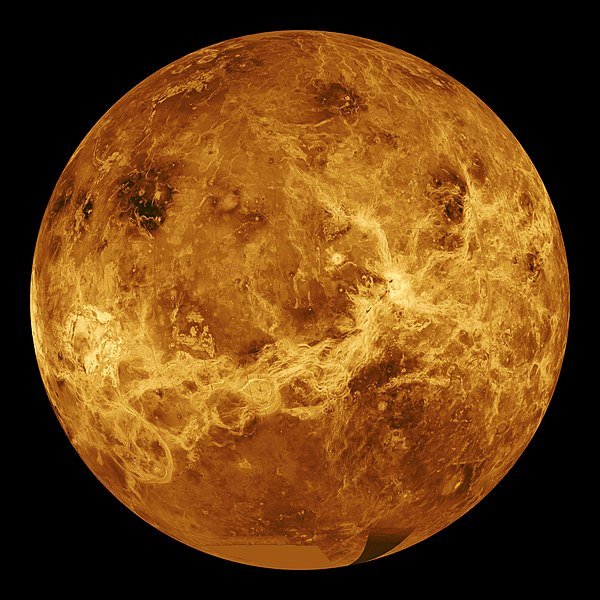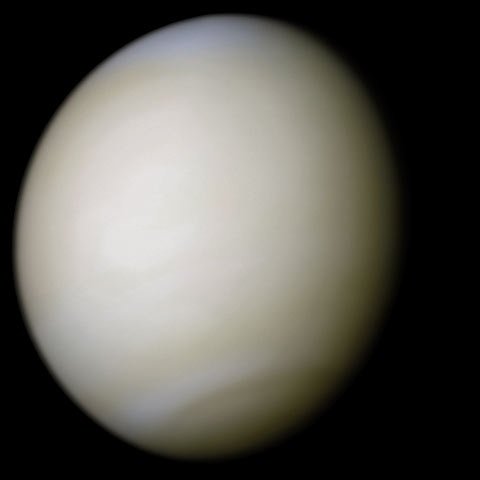300-600 million years ago, Venus exploded. Well, not the whole thing, but its entire crust cracked open and covered the entire surface in lava. As far as catastrophic planetary events go, there's really not much comparable in the history of our solar system.

A radar image of Venus' surface without its atmosphere. [Image source]
It's hard to say exactly how severe the global resurfacing event was, but the most likely scenario is that the surface shattered and sank into the mantle, resulting in a global magma ocean covering Venus. This occurred because Venus lacks plate tectonics like Earth has- instead the entirety of Venus is covered in a single rigid crustal shell. Over time, pressure and stresses build up along the shell, and since it can't move around to relieve the stress like tectonic plates can, the stress eventually builds to the point where it overwhelms the crust.
How do we know that Venus' crust is only ~500 million years old? By counting the craters. We know the rates that meteors have struck other bodies throughout the solar system, so we can fairly effectively date a planet's crust just by counting craters. Venus has very, very few. Our planet has a similarly low number, but that's due to plate tectonics and our ample erosive processes. Other planets with comparably low erosion rates to Venus have much more, and we've found ways to compare their ages.

Three of the Venus' rare craters. [Image source]
Venus is even more volcanically active than Earth- it has volcanoes numbering in the hundreds of thousands or higher, as well as massive flood basalt plains. (Locations where the crust cracks and pours out basaltic mantle magma- this happens on Earth as well. Notable locations are the Deccan Traps in India, the Siberian Traps, and the Columbia River Flood Basalts in Oregon.) The volcanism likely acts as a pressure relief valve for Venus, but only for so long- eventually, the stress will overwhelm Venus' crust. It seems that plate tectonism is the best solution for rocky planets the size of Earth and Venus to avoid this fate.

Venus with its clouds. [Image source]
So why doesn't Venus have plate tectonics? The most likely answer? Because Venus lacks water. Water essentially acts as a lubricant for plate tectonics- its status as a volatile makes rocks more ductile under heat and pressure. So why does Venus lack water? Because all of its oxygen is locked up either in its rocks or as atmospheric CO2. So what let Earth keep its water when Venus couldn't?
Life.
Specifically, oxygenating bacteria. They break up the CO2 for energy, releasing free oxygen into the atmosphere, leading to the formation of more and more water. It's the very existence of those bacteria (and now plants as well) that help sustain plate tectonics. And while Venus likely had a shorter available timespan to develop oxygenating life, due to its closer position to the sun (among other factors), the role of life in plate tectonics really helps give you a beginning of a sense about exactly how important life has been to the history of this planet.
************************************
Bibliography:
https://en.wikipedia.org/wiki/Geology_of_Venus#Global_resurfacing_event
https://en.wikipedia.org/wiki/Geodynamics_of_Venus
http://www.nature.com/news/2010/100830/full/news.2010.435.html
